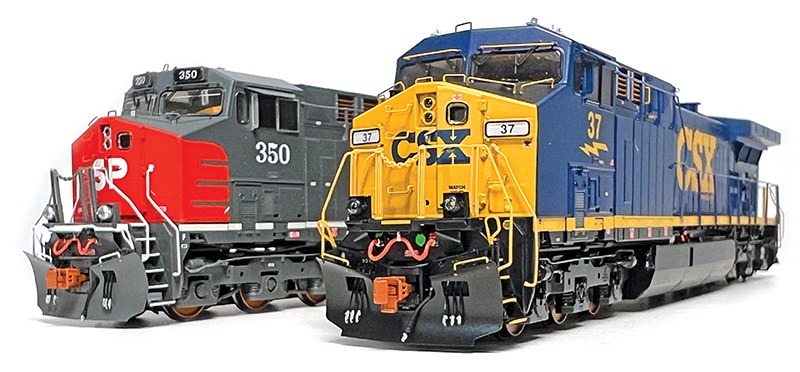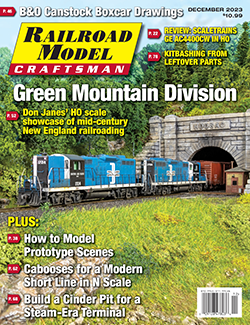 Story and Photos by Harry K. Wong
Story and Photos by Harry K. Wong
While the foundation of railroading across North America was built on steam power, the efficiency of diesel-electric locomotives forced a total transition by the end of the 1950s. The next major shift in technology came in the mid-1980s with the transition away from direct current traction to more powerful alternating current (AC). Made possible by advances in powerful microprocessors that finally enabled precise delivery of electric current, AC traction provided several major advantages including lower maintenance and the key ability to take on extremely high amounts of current for extended periods of time to deliver enormous amounts of sustained traction at low speeds. By comparison, DC traction motors would either have to reduce output or otherwise quickly burn out if operated under the same conditions. AC traction meant longer trains with fewer locomotives enabling greater efficiency and lower cost over time in spite of their higher initial price tag per locomotive. The first “modern” AC-traction locomotive to test in North America was Canadian Pacific’s sole M640 CP 4744, which was converted in 1984. Eight years later, EMD fielded three experimental AC traction SD60MAC units for extensive field testing on the Burlington Northern. This was followed in November 1993 by the SD70MAC, EMD’s first production locomotive to exploit the benefits of AC traction.
Needless to say, General Electric did not sit out this race. The AC4400CW marked the company’s first entry into the new generation of diesel-electric road locomotives that utilized AC traction motors. From 1994 to 2004, more than 2,800 AC4400CW units were produced, versus 1,109 EMD SD70MACs over the same period, marking yet another triumph for General Electric over its once-formidable competitor. The AC4400CW was the AC traction-equipped sister to the traditional DC DASH9-44CW. At first glance both models seem almost identical externally, save for the large cabinet behind the cab on the conductor’s side of AC4400CWs used to house the AC inverters. Lesser spotting features include a more complex louver arrangement on the access doors underneath the cab on AC4400CWs versus the DASH9-44CW.

Available now from ScaleTrains is its first production of General Electric AC4400CW diesels in HO scale. As is customary of “Rivet Counter” models from ScaleTrains, its all-new AC4400CW bristles with class-leading detail throughout, especially under the side sills. Detailed and decorated precisely to match each unit’s configuration according to specific eras modeled, ScaleTrains has created a plethora of long hoods, cabs, and underframe components to cover the maze of different radiator grille changes, equipment door positions and styles, different truck designs and multiple dynamic brake vent configurations, railroad-specific equipment and other changes that have occurred over the eleven-year production span of prototype AC4400CWs.
For the models in this review, a cursory inspection will reveal immediate differences in the radio equipment on the cab roof, the position of numberboards and dynamic brake configuration between the 1994-built Southern Pacific units and CSX 37 as it appears today with full positive train control (PTC) antennae and modernized details. Delving deeper will produce further differences between the units in nose grab iron design, snowplows, equipment access doors and more…



